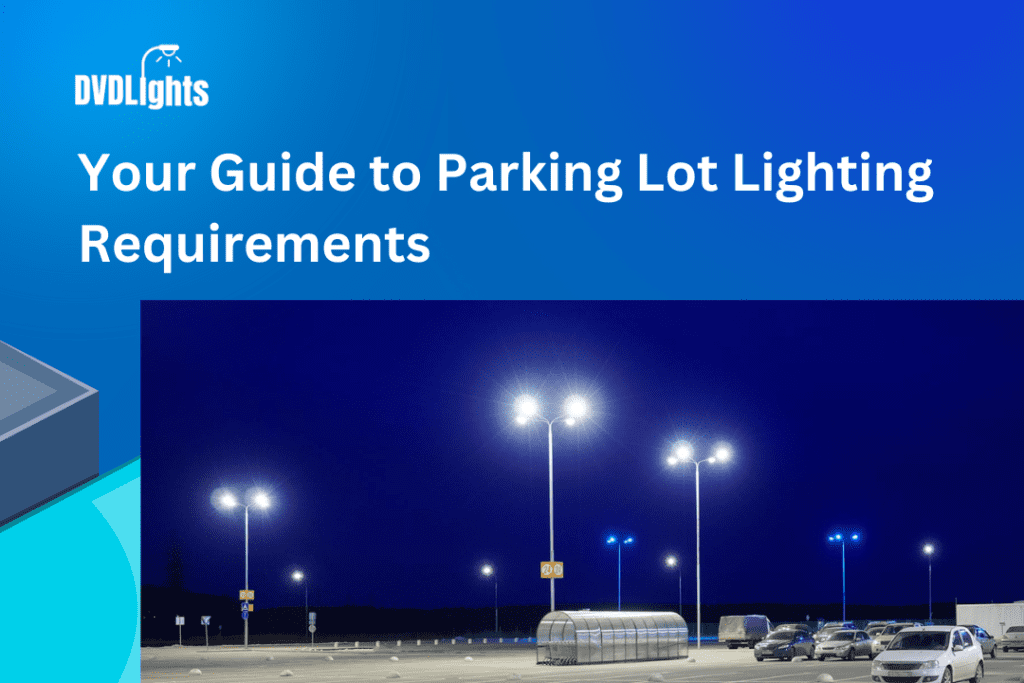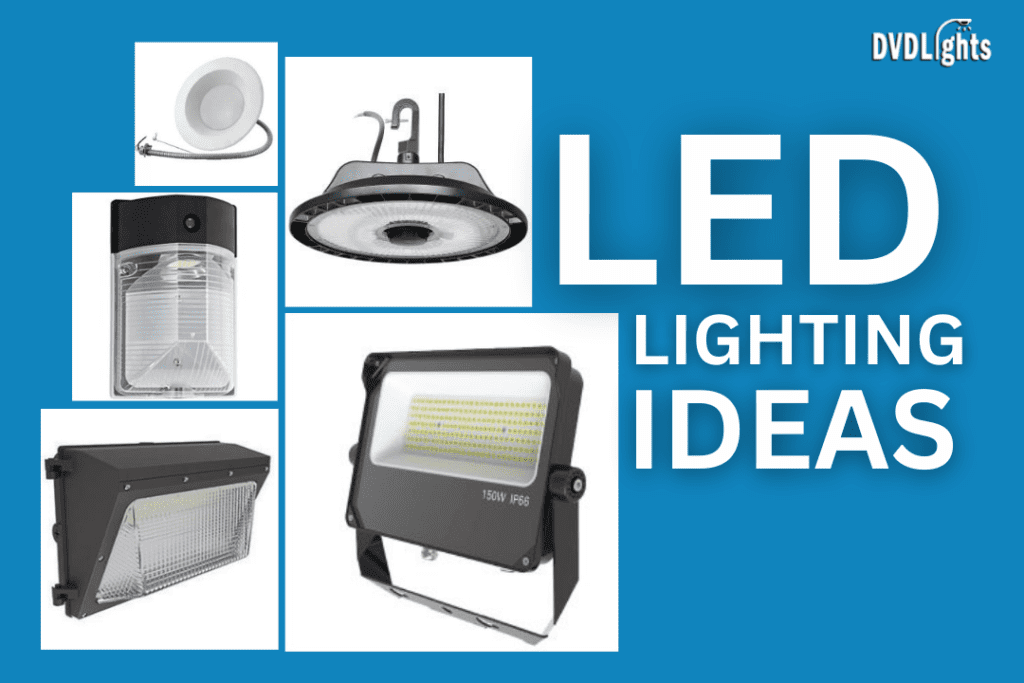Attention to the lighting of a parking lot is not just a convenience matter; it is of paramount consideration to safety and security. A poorly lighted parking lot is hazardous both to the pedestrian and the motorist, since it increases the occurrence of accidents, injuries, and even crimes. This guide is aimed at equipping you with the knowledge to navigate the requirements for parking lot lighting and have your lot safe, secure, and compliant.
Understanding Parking Lot Lighting Requirements:
From accident prevention to allowing both pedestrians and vehicles to simply see, proper parking lot lighting is crucial. Let’s discuss how to balance sometimes conflicting needs with regard to adequate footcandle levels in various zones, while also minimizing light trespass onto neighboring properties. We can explore the dominance of LED technology and the exciting possibilities of smart lighting controls. Might a warmer color temperature be in the future for a more comfortable and aesthetically pleasing environment within a parking lot? This conversation is beyond compliance, rather than about development: Safe, sustainable, and responsible outdoor lighting practices in our communities. Please share your thoughts or questions, or even share an innovative solution you came across in the subject of well-lit parking spaces!
Image by LedMyplace https://ph.pinterest.com/pin/813181276485527039/ via Pinterest
The Power of Proper Lighting
Imagine having to cross a parking lot that goes dark after nightfall. Cars just blur into the shadows, potholes are invisible hazards, and a sense of unease creeps in. Too many poorly lighted parking lots leave the undesirable impression of danger. This does not need to be. Proper lighting to parking lots includes a long list of enormous advantages that go way beyond illumination of a space. It’s about the assurance of a secure, safe, and welcoming atmosphere to each user.
Safety First:
Since it is very dark at night, illumination becomes very essential. Bright lights make visibility clear of pedestrians and other vehicles for drivers, hence averting accidents due to blindness at night. Pedestrians similarly enjoy adequate lighting because they are easily visible to drivers, and they themselves will not Stumble on unevenly laid pavements or hidden obstacles.
Security Matters:
Well-lit parking lots are a natural turn-off to most criminal activities. Darkness gives one an element of anonymity, which cloaks a criminal from view and which they will avoid at all costs. Consequently, vandalism and other types of theft are greatly discouraged, not only for the protection of the vehicles that are parked but also for the greater safety of individuals moving about within the premises of the lot. Place yourself in the mindset of a wannabe thief; they’re much less likely to try vandalizing a well-lit car where they’re clearly visible and easily identifiable.
Liability Concerns:
Unfortunately, accidents do occur. Nevertheless, adequate lighting can help property owners avoid possible liability if an accident occurs due to insufficient lighting. If a pedestrian falls due to some trip in the dark, or if some driver has an accident since he did not see the hazard, then it can be a case of insufficient lighting. Ensuring that recommended light levels in your parking lot are followed puts you a step ahead in minimizing situations of that kind and the future possible legal complications.
Image by Urban Splatter https://ph.pinterest.com/pin/90705379985675280/ via Pinterest
Beyond the Basics
Sufficient parking lot lighting goes beyond simply meeting the minimal requirements for illuminating spaces in a particular area:
Maintenance Matters
Regular inspections and maintenance will optimize your lighting installation’s performance and safety. Periodic checkups can detect burned-out lamps, faulty fixtures, or damaged wiring, for which remedial action should be taken promptly. This timely attention will prevent minor problems from growing into big ones that may affect both safety and security. The lenses and reflectors must be cleaned regularly for maximum light output. Proactive maintenance will give better life to a lighting system and might also save one from expensive repairs in the long run.
Embrace Sustainability
The good news is that creating a safe and well-lit parking lot can also be good for the environment. Here’s how:
- LED Lighting:
We have established earlier that LED lighting is an energy efficiency champion. If you shift to an LED-based system, you’ll be fending off a considerable portion of your parking lot energy consumption. Lower electricity bills and reduced carbon footprint are only some of the many advantages.
- Lighting Controls:
Timers and motion sensors provide another layer of sustainability. You create very little wastage through the turning on and off of lights automatically, when required. Picture a parking lot bathed with light throughout the night, and barely is anyone around. Lighting controls help provide illumination only when required, therefore saving energy and reducing the impact on the environment.
Dark-Sky Compliance:
Some counties/cities have dark-sky ordinances in place to preserve the beauty of the night sky and reduce light pollution. These guidelines offer responsible lighting practices by minimizing light trespass and upward light pollution. If you live in an area with dark-sky regulations, then it is very important to choose fixtures that are compliant with such ordinances. Seek out those with full cut-off designs—directing light where it is needed, downward—and avoiding spillage onto neighboring properties or obscuring the stars. By following dark-sky guidelines, you show your concern for environmental responsibility and ensure protection of the nighttime environment for everyone.
Height of Installation
Most municipalities have ordinances specifying the maximum mounting height for parking lot lights. Typically, the maximum mounting height is between 8′ and 20′, although some industrial sites have an exception. There could be an overall height limit even for the cement pole mount/pedestal for the light pole, and of course, the height is measured from the surface of the parking lot, not from the top of the pole mount.
Complete Cut Off
To result in a full shut off, there needs to be very minimal to no uplight from the lights. This, in turn, means that a projective light on a big area cannot be provided from a light. With its specially designed optics, LED parking lot lights can still spread the light widely without creating upward light beam.
Conclusion
Well-lit parking lots are significant for security and safety. This guide explains how to achieve this by following recommendations from the Illuminating Engineering Society (IES) for light levels and the International Dark-Sky Association (IDA) for light pollution control.Proper lighting deters crime, prevents accidents, and ensures that the property owner isn’t liable. Just some of the features that will make this parking lot lighting system safe, sustainable, and responsible include LED fixtures, motion sensors, timers, and regular maintenance.
FAQs
How bright should my parking lot lights be?
The brightness depends on the area. Entry/exit points require the most light (20-30 fc), while parking spaces need around 10-15 fc. The Illuminating Engineering Society (IES) publishes recommended light levels for different zones.
How can I avoid light trespass and glare from bothering my neighbors?
Choose fixtures that direct light downwards and comply with dark-sky regulations if applicable in your area. Look for fixtures with a “full cut-off” design to minimize light spillage.
What are the benefits of using LED lights in my parking lot?
LED lights are energy-efficient, last longer than traditional lamps, and offer excellent light quality for better visibility. This translates to lower electricity bills, reduced maintenance costs, and a safer environment.
Do I need to set timers or motion sensors for my parking lot lights?
While not mandatory, timers and motion sensors can significantly improve efficiency. They automatically turn lights on/off based on pre-set schedules or movement detection, reducing energy waste during off-peak hours.
How high can I mount my parking lot lights?
The appropriate mounting height for parking lot lights largely depends on the location and size of the property. For smaller parking lots, lights are typically mounted at heights ranging from 12 to 20 feet, while medium-sized lots usually require heights of 20 to 25 feet. In larger parking areas, lights may be mounted at 25 to 35 feet, and very expansive properties like shopping centers or industrial zones might need heights of 35 to 40 feet or even higher. Higher mounting heights can reduce the number of fixtures needed but may necessitate higher wattage to achieve the same level of illumination.





